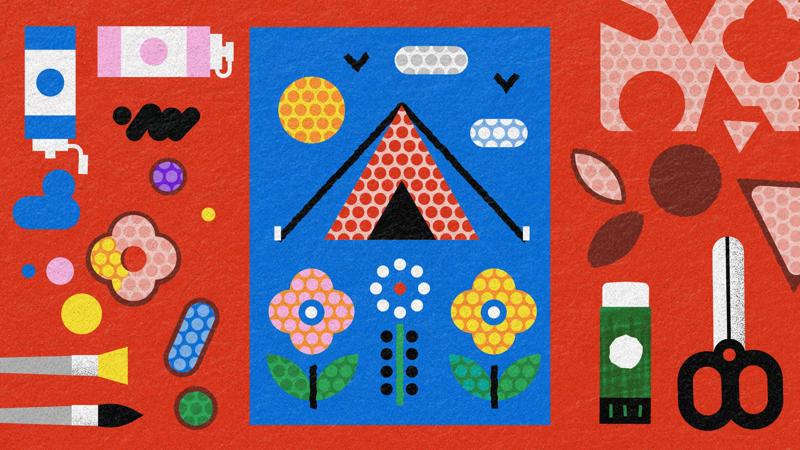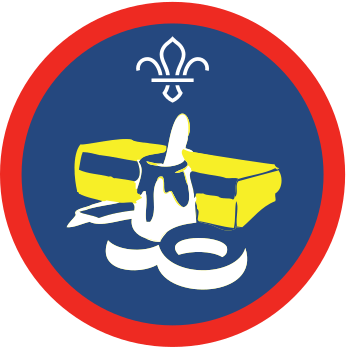
Bubble wrapping
You’ll need
- Tables
- Chairs
- Pens or pencils
- Scissors
- Sticky tape
- Paint
- Paint trays
- Cardboard
- Bubble wrap (re-used from old packaging is best)
- Large pieces of paper (A3 coloured paper, a roll of brown paper, or old wrapping paper)
Before you begin
- You may want to run this activity as one of a few bases. This works well as part of a craft or gift-making evening.
- You may want to make an example before you run the activity so everyone can see what the finished wrapping paper might look like.
- This is a great activity to run during an online session. Check out the advice on using Zoom and other popular digital platforms and the guidance on being safe online.
Prepare the bubble wrap stamps
- Everyone should take some cardboard and draw shapes that will look good in repeating patterns. These will become stencils.
- Once happy with their stencils, an adult can help cut them out of the cardboard using sharp scissors or a craft knife.
- Using tape or glue, everyone should stick bubble wrap to their stencil.
- Everyone should trim the excess bubble wrap from their stencil using scissors. This may require adult supervision.
Time to stamp!
- Everyone should choose the paper they would like to use to wrap their gifts.
- Everyone should choose what colour paint they would like to use for the stamp.
- Dip the bubble wrap on the stencil into the paint. Try to get an even coat of paint.
- Carefully press the stencil onto the paper. Press down and lift it up.
- Apply more paint when it runs out and keep stamping the stencil to cover the paper in the design.
- Once everyone is happy with their designs, the wrapping paper should be left flat to completely dry out.
Reflection
This activity was about being independent by making choices about your own unique design, and building friendships by thinking about the perfect wrapping paper when giving a gift to friends or family.
There are numerous reasons we give gifts:
- an expression of love or friendship
- an expression of gratitude
- to congratulate someone
- offering travel souvenirs
- to show sympathy or solidarity.
Are there any other reasons you can think of as to why we would give a gift? How does it make you feel when you receive a gift? Who are the people in your life that you will be giving gifts to?
Safety
All activities must be safely managed. You must complete a thorough risk assessment and take appropriate steps to reduce risk. Use the safety checklist to help you plan and risk assess your activity. Always get approval for the activity, and have suitable supervision and an InTouch process.
- Scissors
Supervise young people appropriately when they’re using scissors. Store all sharp objects securely, out of the reach of young people.
- Sharp objects
Teach young people how to use sharp objects safely. Supervise them appropriately throughout. Store all sharp objects securely, out of the reach of young people.
- Rubbish and recycling
All items should be clean and suitable for this activity.
- Glue and solvents
Always supervise young people appropriately when they’re using glue and solvent products. Make sure there’s plenty of ventilation. Be aware of any medical conditions that could be affected by glue or solvent use and make adjustments as needed.
Designing the stencil is not necessary – the bubble wrap works well on its own to make a simple spotty design. Consider using craft knives if they’re more appropriate than scissors, but make sure you have extra supervision to do this.
Some people may prefer to work in pairs, or may need additional assistance. Provide gloves to those who may not want to get paint on their skin
All Scout activities should be inclusive and accessible.
Consider providing further craft supplies for everyone to add to their wrapping paper, like stickers, bio-degradable glitter or ribbon. You can accompany this activity with another gift creation activity. This could be themed for the season, such as stars, snowmen, and Christmas trees for winter gifts, or themed for the specific person they are giving their gift to.


